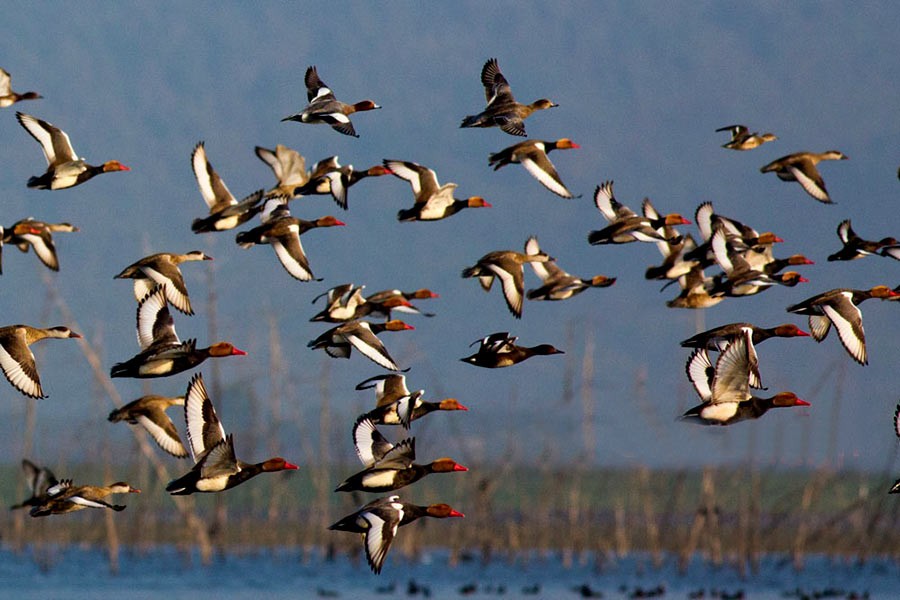An ecologically endangered area in Sunamganj, which is also a notable wetland in Asia, has been witnessing decrease in the number of migratory birds this winter.
Experts and local people attributed such decline in seasonal 'guest birds' of Tanguar Haor to illegal hunting, loss of forage and biodiversity as well as climate changes among other things.
The second largest Ramsar site, which is rich in biodiversity, usually attracts good number of tourists for thousands of migratory birds in each winter in the country's northeastern district.
The haor is spanned over an area of 100 square kilometres having 46 villages at Dharmapasha and Tahirpur upazilas.
Around 219 species of winged visitors used to flock to the haor every year by flying thousands of miles from various parts of the world including Siberia, China, Himalaya and many other countries.
But this year, with the utmost disappointment of tourists and bird lovers, the number of visiting birds dwindled sharp.
Locals alleged that, the main reason behind the decline is after-dark bird hunting dodging the guards.
The others reasons include lack of forage that birds feed on and powerful lights illuminated on international border fences.
However, local executive magistrate Shuvon Rangsa blamed high water level of the wetland for decline in the number of migratory birds.
"Due to high water level, the forages that birds feed on remained submerged," said Shuvon Rangsa.
The government official also sees lack of public awareness to protect the guest birds.
Meanwhile, Assistant Project Officer of International Union for Conservation of Nature (IUCN) Mehedi Hassan said temperature is a factor behind the decline in visiting birds this season.
"High water level is also a reason behind the decline," he admitted.
According to UNB, Bangladesh declared Tanguar haor as an ecologically critical area (ECA) in 1999 considering its critical condition as a result of over exploitation of its natural resources.
In 2000, the hoar basin was declared a Ramsar site - wetland of international importance.
As an ECA area and Ramsar site, the government is committed to preserve its natural resources.
Tanguar haor plays an important role in fish production as it functions as a 'mother fishery' for the country fetching good yearly revenues for the government.
Locals, tourists, bird lovers - all expect the government to undertake measures to protect the environment of Tanguar haor and make it lively with the chirping of winged guests again.


